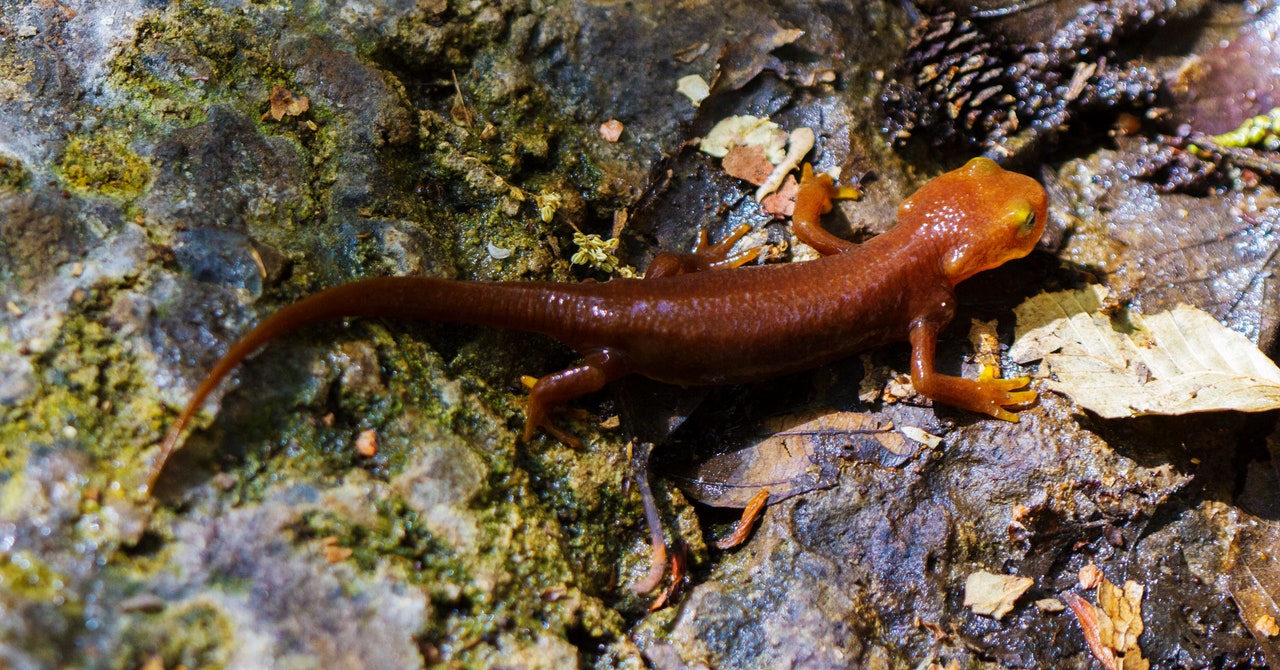
Around a hundred miles to the south of Chileno Valley Road, another group of volunteers—the Alma Bridge Newt Patrol—have been painstakingly documenting more than 5,000 newts a year that perish while crossing a 4-mile stretch of road in the Santa Cruz Mountains.
Unlike Gale’s brigade, the newt patrol aren’t able to save many newts—it’s illegal for them to station along the winding mountain road at night. Instead, about a dozen volunteers, led by biologist Merav Vonshak, document the dead.
“It’s really heartbreaking,” says Vonshak—especially in late fall, when many juvenile newts die. “As a scientist, I try to detach myself and focus on how important it is to document this.”
Using the volunteers’ data, researchers at the UC Davis Road Ecology Center discovered that the newts crossing Alma Bridge Road were experiencing one of the highest roadkill rates reported for any wildlife species in the world. A study commissioned by local officials found that the adult California newt population along the Alma Bridge Road will disappear completely in about 50 years if nothing is done.
If anything, the report presented an optimistic view, Vonshak says. It didn’t consider how the climate crisis and development would affect the population.
Researchers have found that Southern California newts’ body condition—a measure comparing weight and length—declined by 20 percent between 2008 and 2016. It’s a sign that temperature extremes and drought—exacerbated by global heating—are already affecting Pacific newts, according to Gary Bucciarelli, a conservation biologist at UCLA who led the 2020 study. Newts in Northern California are likely to suffer the same consequences in coming years, he says.
The newts are “dealing with more prolonged droughts and changing precipitation patterns due to climate change, they’re dealing with wildfires,” Bucciarelli said. “They’re getting hammered hard.”
“You Want to Fight for It”
Gale knows that she and her brigade can only keep up their work for so long. “Of course, it’s not a sustainable solution,” she says.
Both newt groups have been petitioning for longer-term solutions—advocating for either closing the roads during migration season or elevating the roads so at least some of the newts can cross safely underneath.
But so far, their efforts have gained little traction. Past grant applications to elevate stretches of Alma Bridge Road and create newt crossings were rejected. And the newts, which aren’t listed as endangered or threatened, are less likely to be prioritized for existing state or federal funding for such projects.
Conservationists are lobbying for a new bill, introduced in the California Assembly last month, that would require the state transportation agency to implement 10 projects to improve wildlife connectivity per year. If it’s signed into law, that bill could help fund underpasses for newt populations on state roads and major highways. But since both Alma Bridge Road and Chileno Valley Road are county-managed roads, neither would be helped directly.
“It’s tough, because how long can we save the newts while we’re also building more highways?” says Paul Licht, the former director of the botanical gardens at UC Berkeley, who has advised efforts to protect migrating newts. “I mean—not long.”
“But what’s your alternative? To do nothing?” he added.
That’s Gale’s view as well. And there’s something about being outside on dark, damp nights and holding up the squirming newts, she says, that can help override all the uncertainty and worry.
“It’s kind of like when you hold a human baby,” says brigadier Shannon Drew. “It’s this precious, little, perfect thing you’re holding—and you want to fight for it.”
More Great WIRED Stories


